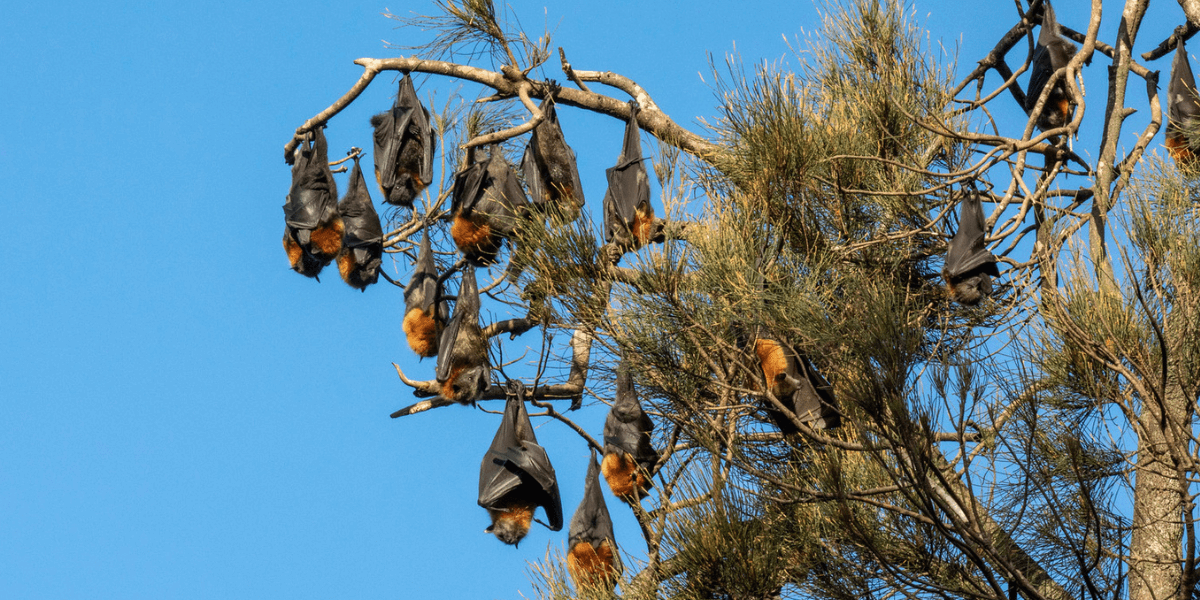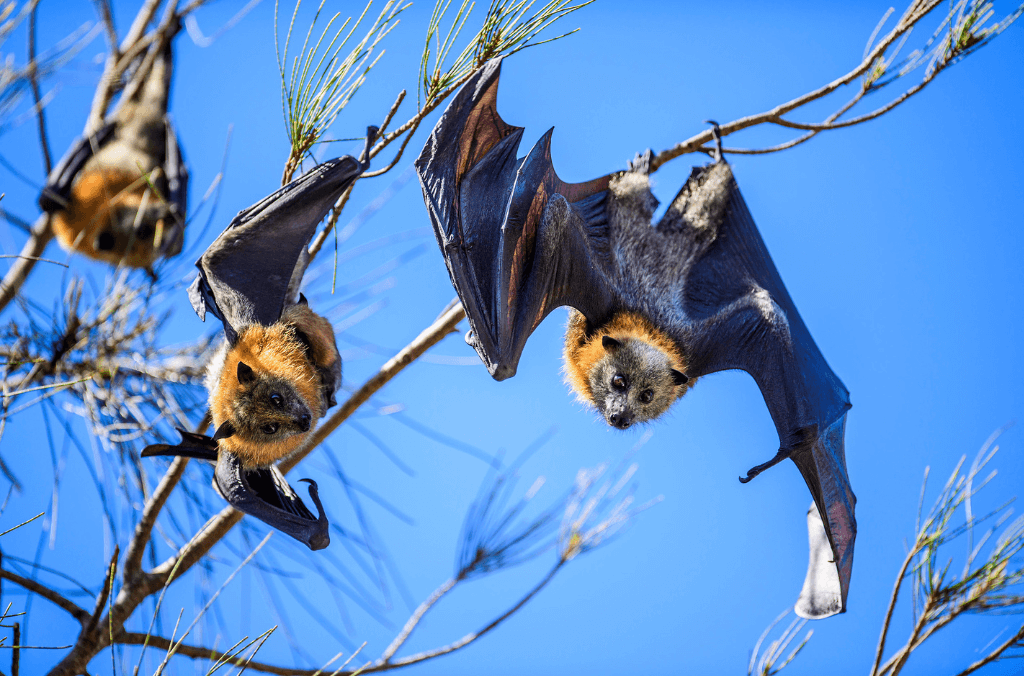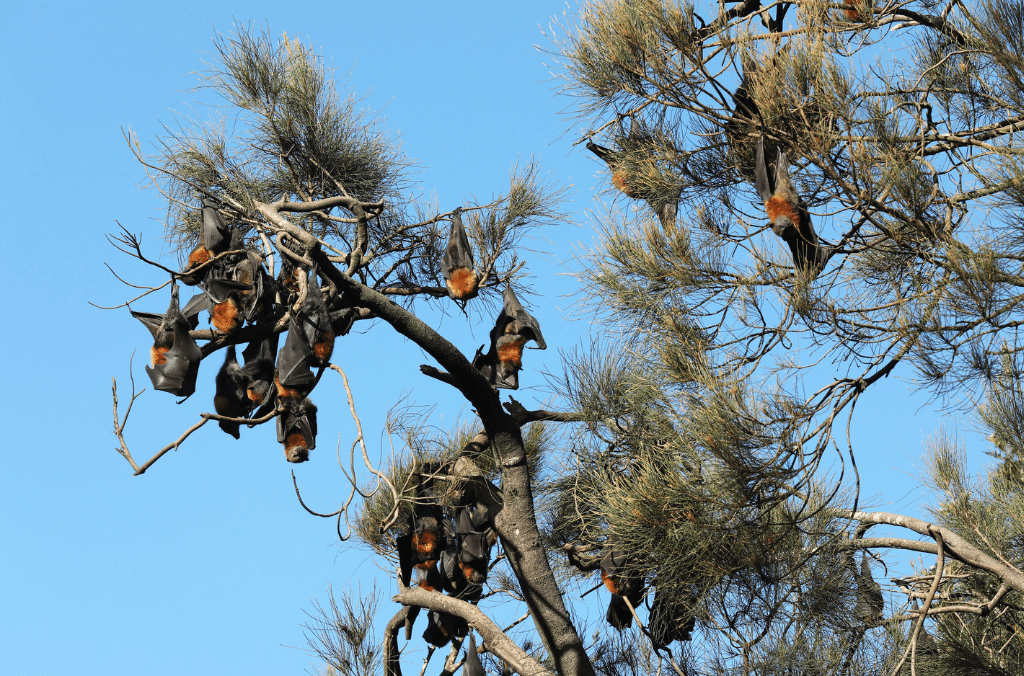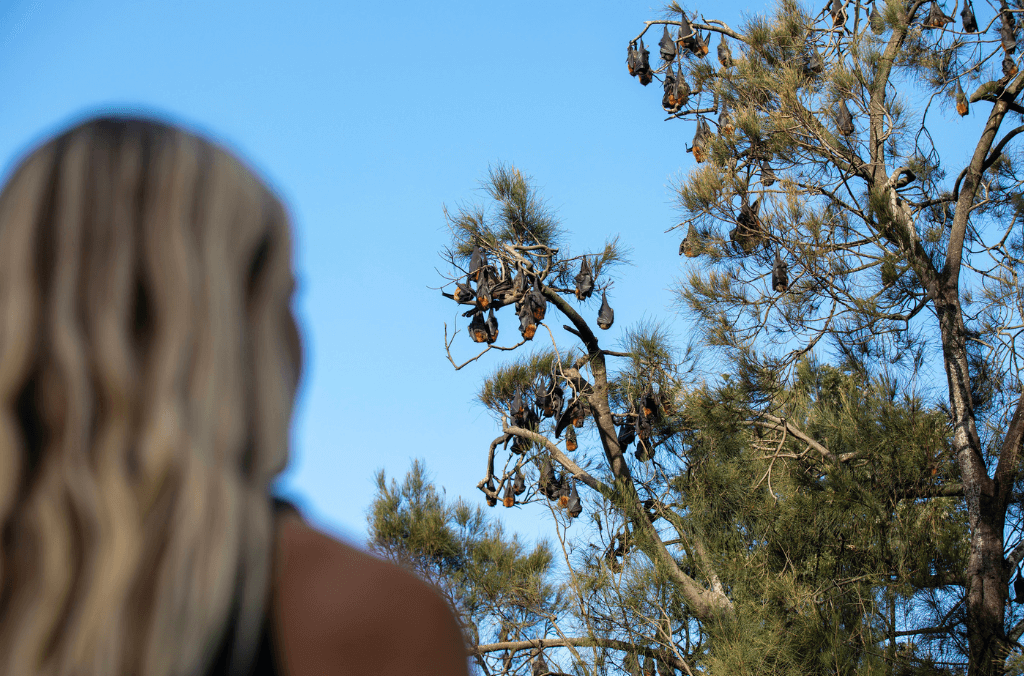The bat is the only threatened animal species recorded within the park. It was first noted by early colonists along Parramatta River in 1798.
About flying-foxes
Flying-foxes are intelligent animals that have an important role to play in the good health and regeneration of our natural vegetation. They pollinate native plants and spread seeds as they move around searching for food. The grey-headed flying-fox is considered a ‘keystone species’ vital for the long-term health of plants, particularly gum trees, and is protected under state and federal legislation.
It is our responsibility, together with the neighbouring landowners (where the rest of the camp is located), to protect the Parramatta Park flying-fox camp.
We prepared a camp management plan in 2020 to protect the flying-foxes while minimising the effect on the community. We developed the plan in collaboration with the then Office of Environment and Heritage, Parramatta Council, Urban Growth NSW and wildlife carers.
Resources
Information on threatened species:
Frequently asked questions
The Parramatta camp has between 5,000 and 10,000 flying-foxes. Seasonal influxes of up to 20,000 have been recorded.
The Parramatta camp has been there for hundreds of years. In fact, flying-foxes were first recorded in the area by European colonists in 1798.
Flying-foxes are a nomadic species. This means they set up camps or move long distances based on available food sources. The NSW Government is collecting data to better understand the nomadic patterns of flying-foxes over the long term.
Yes. Flying-foxes are a native species and are protected under state and federal legislation.
Flying-foxes are a keystone species crucial to the health of Australian native trees. They can fly up to 20 km a night looking for food, pollinating trees and dispersing seeds through their droppings. Following bushfires, they have been crucial to rejuvenating our forests.
In some flying-fox camps, the trees can defoliate. This tends to happen in camps where space is restricted, and the flying-foxes have less opportunity to move around the trees.
Risks of disease are extremely low if you don’t have physical contact with flying-foxes. You can contract Australian bat lyssavirus if you are scratched or bitten by a flying-fox. Less than 10% of bats carry the virus. You cannot get the disease from having contact with their droppings or urine.
If a flying-fox bites or scratches you, wash your hands in hot soapy water, apply disinfectant and seek medical attention immediately.
Australian lyssavirus and Hendra virus are 2 diseases commonly associated with flying-foxes. The risk of flying-foxes transmitting these diseases to humans is extremely low. Less than 10% of flying-foxes carry lyssavirus, and there have been no cases of flying-foxes transmitting Hendra virus directly to humans. Infection is through an intermediary animal such as a horse.
Avoid handling the flying-fox and call your local wildlife rescue organisation immediately. If you see a sick or injured flying-fox in Parramatta Park, please call WIRES Wildlife Rescue on 1300 094 737.




